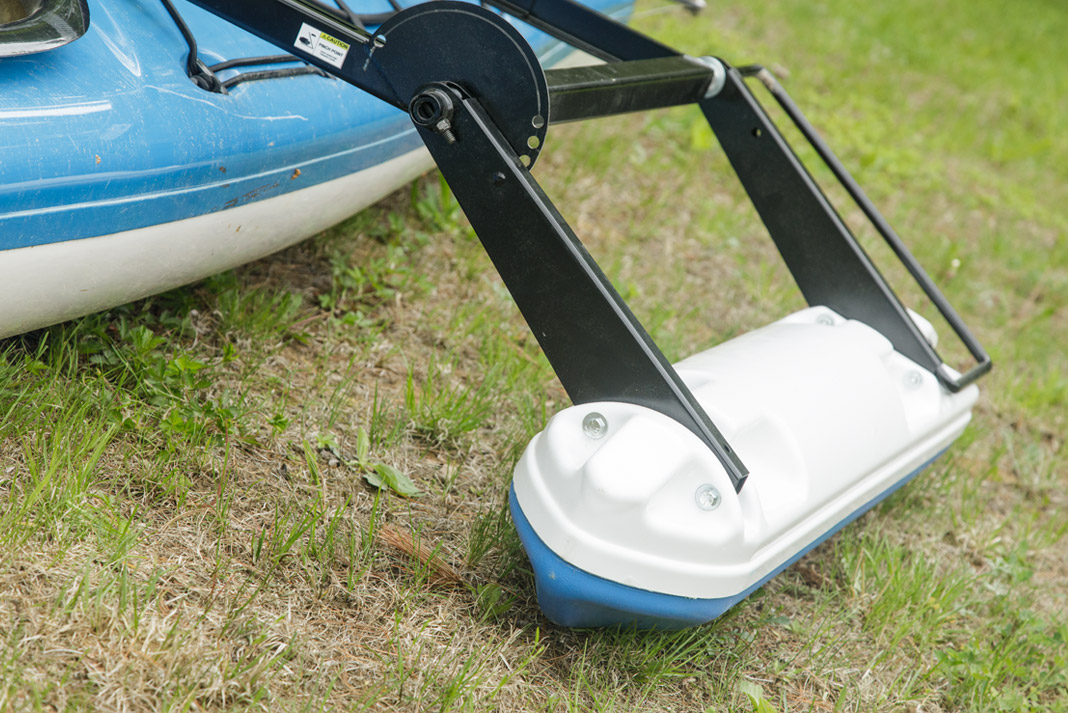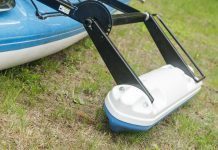If you find yourself thinking, “This kayak just isn’t steady enough,” you just might be in the market for an outrigger. What are kayak outriggers? Simply put, they’re like training wheels for a kayak; they’re flotation devices that essentially widen the bottom of your boat, giving you more stability. They usually take the form of an arm protruding horizontally from the side of your kayak with some kind of pontoon at the end.
But why would you want them? Remember, they’re all about stability. There are a number of situations in which you may find your boat simply isn’t stable enough. Perhaps you’re on a long stretch of water where using a sail would be absolutely perfect, but you know rigging a sail up would compromise your stability. Outriggers can help with that. Or, maybe you’re just starting to get into kayak angling, but don’t feel totally stable rigging up rods, reeling in fish and taking your catch off the hook in your boat. An outrigger would help with that.
If you’re tall, heavy and always feel unstable in a kayak, then you can already imagine—an outrigger would help with that. And if you simply don’t feel safe in a kayak, an outrigger would help.

Types of kayak outriggers
Kayak outriggers, also known as kayak stabilizers, come in a couple different variations. The main two are inflatable or solid kayak stabilizer systems. Inflatable outriggers use inflatable pontoons that have a bladder with a tough outer membrane. They’re easy to store, are lightweight and can be inflated using your mouth; however, they are susceptible to punctures from rough terrain or your fishing equipment.
Solid kayak stabilizer kits use solid floats to offer more stability. Often made of PVC, these things are rugged and can be bashed off sharp rocks without concern. Of course, they’re a bit more difficult to store than inflatable options, and tend to be more expensive and heavier.
Most outriggers are highly adjustable, allowing you to find the right spot on your boat for them. Horizontal arm lengths vary as does the attachment method.
How to find the right outrigger for your kayak
If you’ve decided you need outriggers, you probably have all kinds of questions, one of them being, “How long should a kayak outrigger be?” Generally outriggers are between 30 to 36 inches long. They’re usually placed about three-quarters of the way toward the stern, just behind the seat. This keeps them out of the way of your paddle. Of course, this is all up to personal preference.
There are also some outriggers that lift out of the water, providing you with the ability to easily switch between paddling with or without their assistance as conditions change.
How to install outriggers on a kayak
There are a couple different mounting options, some easier than others. Some require you to drill a couple holes in your boat, some don’t. It’s certainly something to consider when shopping for outriggers.
Of course, it’s best to make sure the kayak stabilization kit is compatible with your boat before purchasing it. Any of the reputable outriggers will come with installation instructions. Following their directions, you’ll often have to drill a couple holes in your boat. If you’re totally uncomfortable doing this, your local outfitter should be able to do it for you.
Remember, you can’t un-drill holes! First, figure out the right location on your boat and mark it. When you’re ready to begin drilling, start with a smaller drill bit and switch it out for gradually larger ones to ensure you get the hole in just the right spot.
DIY kayak outriggers
Of course anything you can buy, you can make yourself. A DIY kayak stabilizer is totally in the realm of possibility for the avid handyman (or woman!). You can build them from all kinds of materials available at the local hardware store: PVC plumbing pipe, old water bottles or crab pot buoys. You can even go full MacGyver and build it out of bubblegum and duct tape!
The great school of Youtube is probably your best teacher on this. A quick search will give you all kinds of results—some are 18 minutes long, some are six minutes and all have varying levels of useful information. Our best advice? Watch them all and take the best tips from each. Just make sure you test the stability of your homemade outriggers close to shore on a calm body of water before fully putting your trust in them.








Got a costco main stream tropic kayak. Looking for out riggers ? Where to buy?